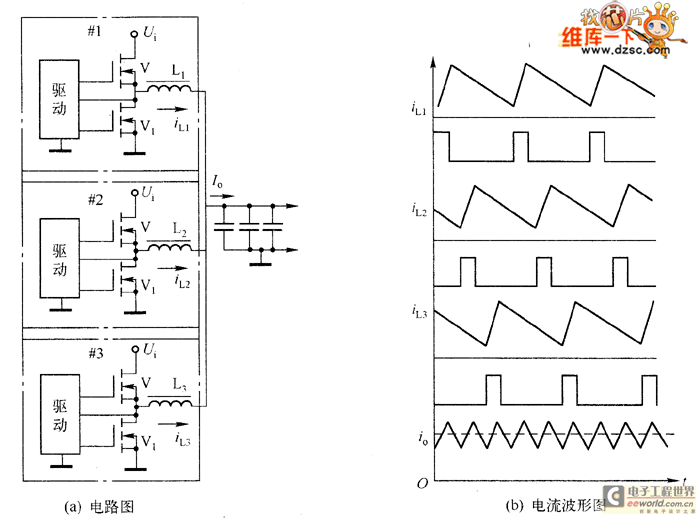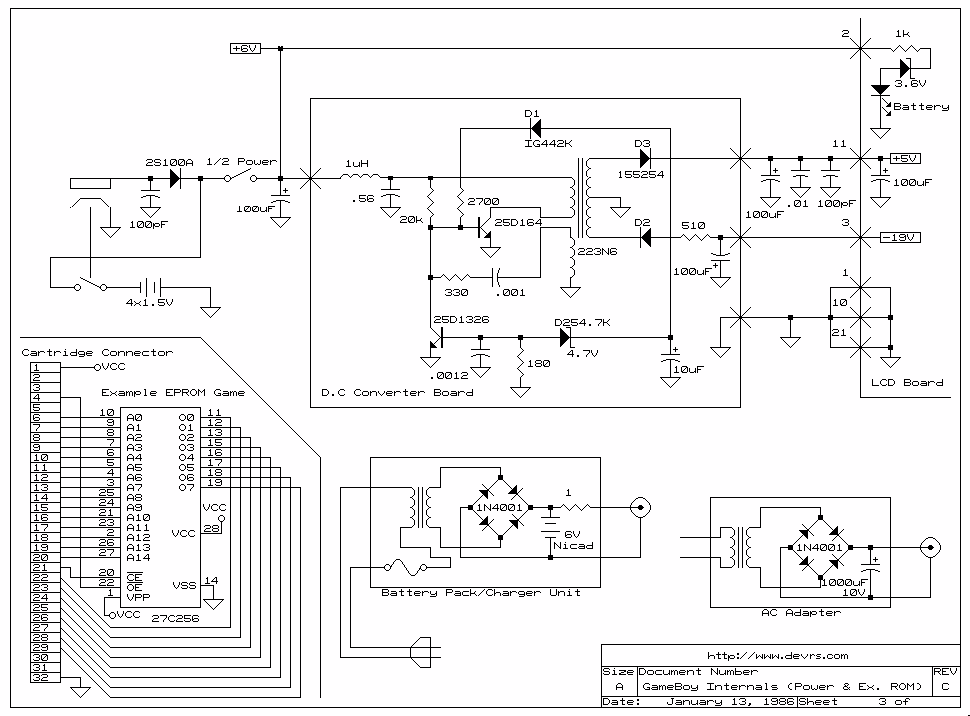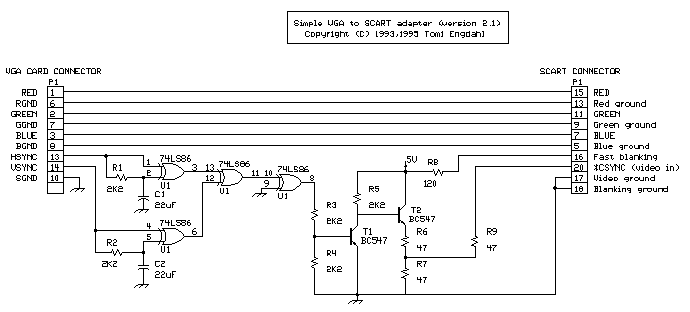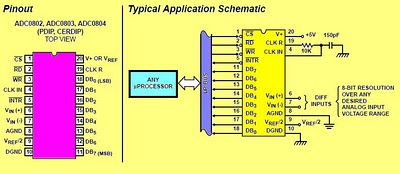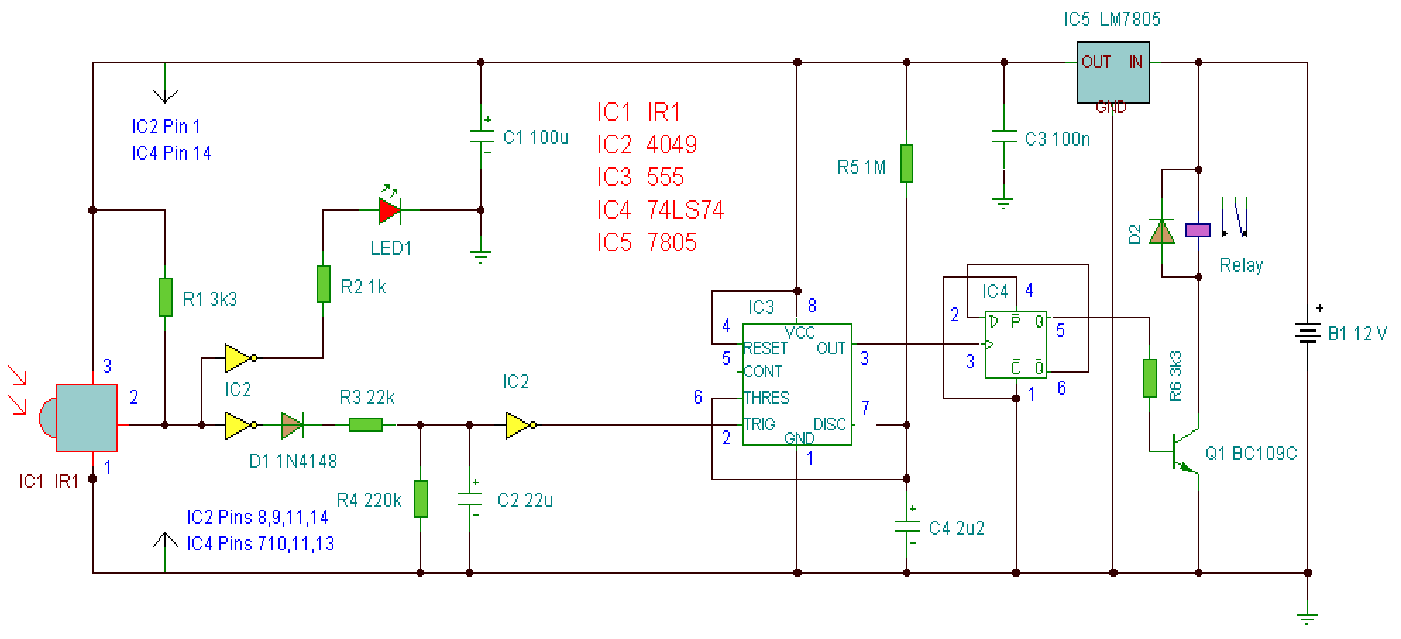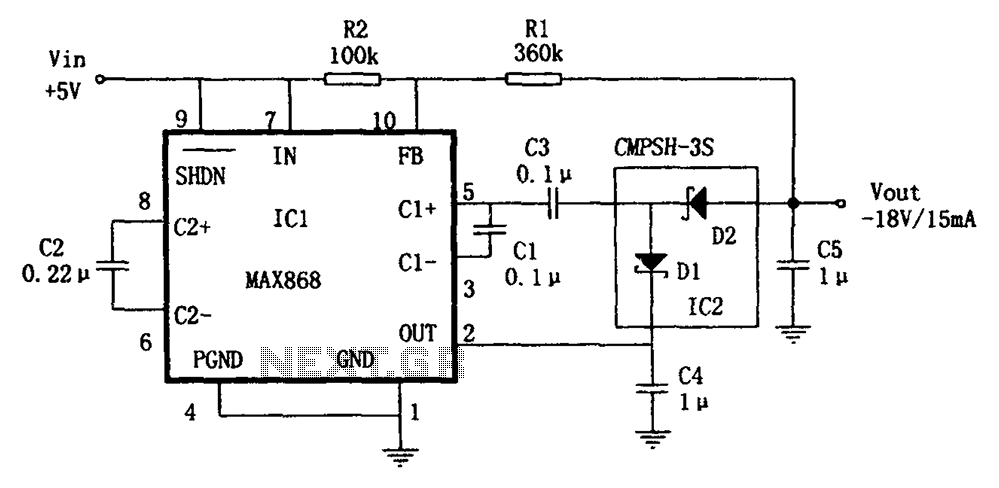
6v to 12v converter circuits
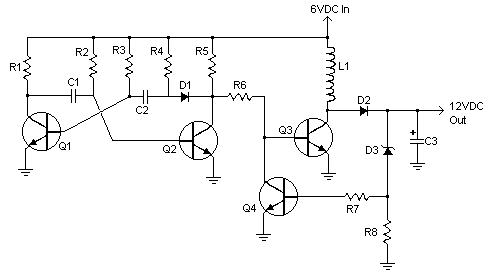
A 6V to 12V DC converter circuit is designed to convert a lower voltage of approximately 6 volts to a higher voltage of 12 volts, albeit with a reduced current rating. This inverter circuit can deliver up to 800mA of 12V power from a 6V supply, making it suitable for powering 12V car accessories in a 6V vehicle. The circuit is relatively simple, with an efficiency of around 75%, and is quite practical. By altering a few components, it can be adapted for different voltage outputs. The cost of constructing the 6V to 12V converter is low enough to warrant building it rather than modifying existing equipment to accommodate a 6V power supply. The design emphasizes simplicity and functionality, operating without the need for a transformer. This is a simple switcher step-up voltage regulator, utilizing the LM2577-ADJ from National Semiconductor. With some additional components, a heat sink, and appropriate wiring, it is capable of generating over 1A from the battery of an Austin vehicle. The output connector is sourced from a car charger extension lead, allowing devices like phones or sat-navs to plug directly in. This 6V to 12V DC-DC boost converter can handle a load of approximately 3A at 12V. The circuit employs a 555 timer IC configured in astable mode, producing a frequency of about 29kHz with a duty cycle of roughly 54%, which drives the input of a TIP41C transistor. A 1000uF capacitor is used to smooth the output voltage of the DC-DC converter. An LED and a 1.5kΩ resistor serve as an indicator and load for output stability when no load is connected. Additionally, a 12V zener diode (1N5242B) can be placed across the output to ground for enhanced output stability.
The 6V to 12V DC converter circuit operates on the principle of boosting the input voltage through a switching mechanism. The LM2577-ADJ voltage regulator is a key component, functioning as a step-up converter that utilizes an inductor to store energy and release it at a higher voltage. The 555 timer IC, working in astable mode, generates a square wave signal that controls the TIP41C transistor, allowing it to switch on and off rapidly. This switching action creates a pulsed current through the inductor, which, when combined with the output capacitor, results in a higher average output voltage.
The circuit design includes a feedback mechanism to maintain the desired output voltage. The zener diode provides a reference voltage that stabilizes the output by shunting excess voltage to ground, ensuring that the output voltage remains consistent even under varying load conditions. The use of a 1000uF capacitor is critical for filtering out voltage ripples, resulting in a smooth DC output suitable for sensitive electronic devices.
The efficiency of approximately 75% indicates that while some power is lost as heat, the design remains effective for applications where moderate current is required. The simplicity of the circuit, along with the readily available components, makes it an attractive option for hobbyists and engineers looking to power 12V devices from a 6V source. Overall, this circuit exemplifies a practical solution for voltage conversion in automotive and portable applications.6V to 12V DC converter circuits that can be used to convert a small voltage of about 6 volts to a higher voltage of 12 volts but ofcourse with a lower current rating. This inverter circuit can provide up to 800mA of 12V power from a 6V supply. For example, you could run 12V car accessories in a 6V car. The circuit is simple, about 75% efficient and quite useful. By changing just a few components, you can also modify it for different voltages. The cost of building the 6volts to 12 volts converter should be low enough to justify constructing it instead of modifying the entire equipment setup to work directly with a 6 volts power supply. The two principles of simplicity and functions properly without the need of the transformer. This is a Simple Switcher step-up voltage regulator made by National Semiconductor, (part number LM2577-ADJ).
Together with a few extra components, a heat sink and some wiring, it is possible to generate over 1A from the battery of an Austin. The output connector is taken from a car charger extension lead, so that a phone or a sat-nav just plugs straight in.
This 6V to 12V dc-dc boost converter can drive a load in 12V about 3A current. The 555 timer IC is operated in astable mode, generates about 29Khz frequency of about 54% duty cycle drives the input of TIP41C transistor. 1000uF capacitor smoothens the output voltage of the dc-dc converter. LED and 1. 5Kohm resistor serves as indicator and load for output stability when no load is connected. You can add a 12V zener diode (1N5242B)across output to ground for further output stability. 🔗 External reference
The 6V to 12V DC converter circuit operates on the principle of boosting the input voltage through a switching mechanism. The LM2577-ADJ voltage regulator is a key component, functioning as a step-up converter that utilizes an inductor to store energy and release it at a higher voltage. The 555 timer IC, working in astable mode, generates a square wave signal that controls the TIP41C transistor, allowing it to switch on and off rapidly. This switching action creates a pulsed current through the inductor, which, when combined with the output capacitor, results in a higher average output voltage.
The circuit design includes a feedback mechanism to maintain the desired output voltage. The zener diode provides a reference voltage that stabilizes the output by shunting excess voltage to ground, ensuring that the output voltage remains consistent even under varying load conditions. The use of a 1000uF capacitor is critical for filtering out voltage ripples, resulting in a smooth DC output suitable for sensitive electronic devices.
The efficiency of approximately 75% indicates that while some power is lost as heat, the design remains effective for applications where moderate current is required. The simplicity of the circuit, along with the readily available components, makes it an attractive option for hobbyists and engineers looking to power 12V devices from a 6V source. Overall, this circuit exemplifies a practical solution for voltage conversion in automotive and portable applications.6V to 12V DC converter circuits that can be used to convert a small voltage of about 6 volts to a higher voltage of 12 volts but ofcourse with a lower current rating. This inverter circuit can provide up to 800mA of 12V power from a 6V supply. For example, you could run 12V car accessories in a 6V car. The circuit is simple, about 75% efficient and quite useful. By changing just a few components, you can also modify it for different voltages. The cost of building the 6volts to 12 volts converter should be low enough to justify constructing it instead of modifying the entire equipment setup to work directly with a 6 volts power supply. The two principles of simplicity and functions properly without the need of the transformer. This is a Simple Switcher step-up voltage regulator made by National Semiconductor, (part number LM2577-ADJ).
Together with a few extra components, a heat sink and some wiring, it is possible to generate over 1A from the battery of an Austin. The output connector is taken from a car charger extension lead, so that a phone or a sat-nav just plugs straight in.
This 6V to 12V dc-dc boost converter can drive a load in 12V about 3A current. The 555 timer IC is operated in astable mode, generates about 29Khz frequency of about 54% duty cycle drives the input of TIP41C transistor. 1000uF capacitor smoothens the output voltage of the dc-dc converter. LED and 1. 5Kohm resistor serves as indicator and load for output stability when no load is connected. You can add a 12V zener diode (1N5242B)across output to ground for further output stability. 🔗 External reference
